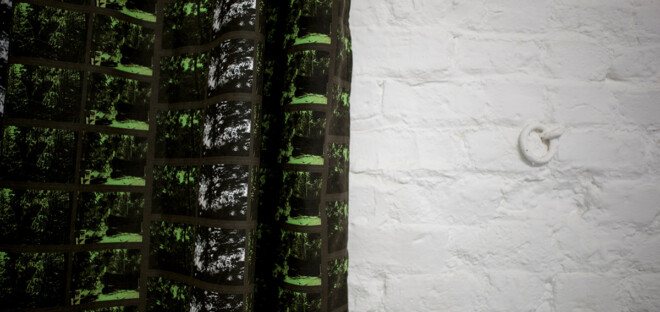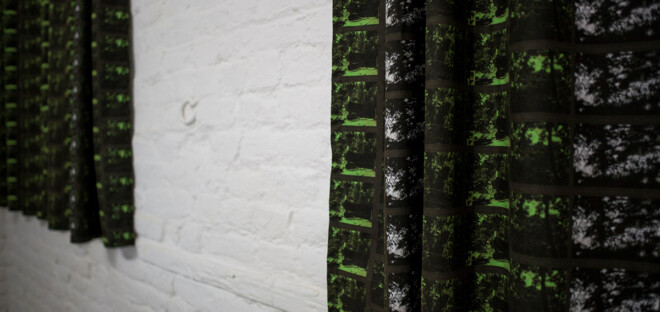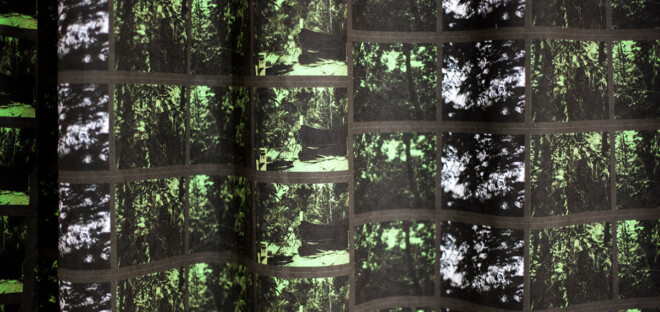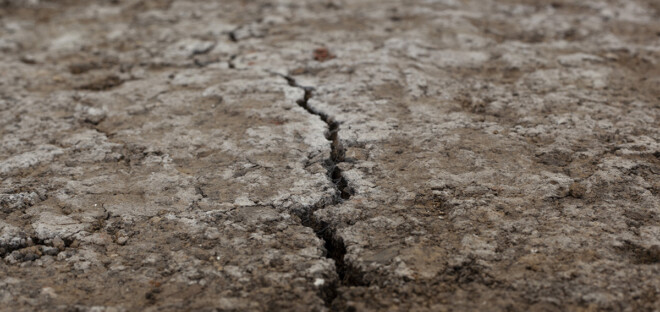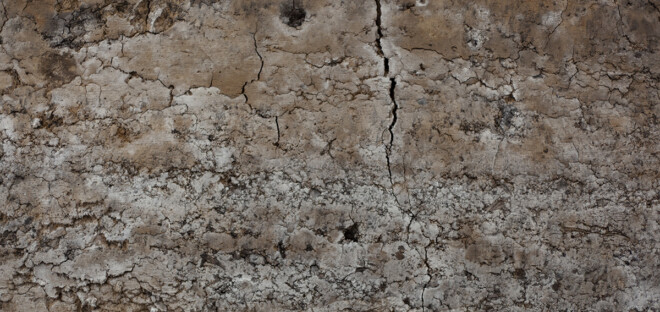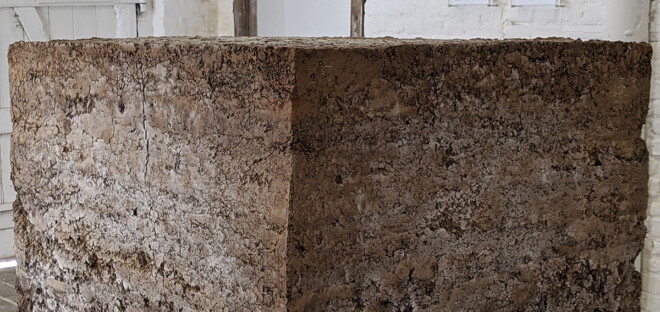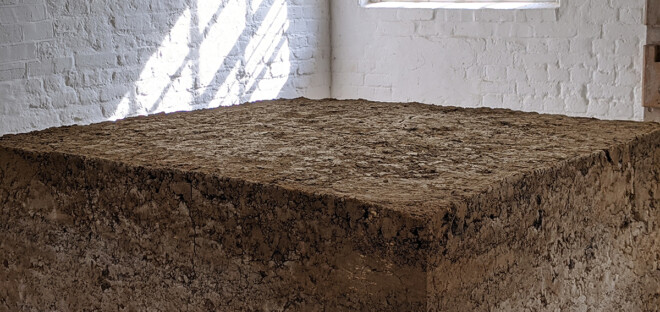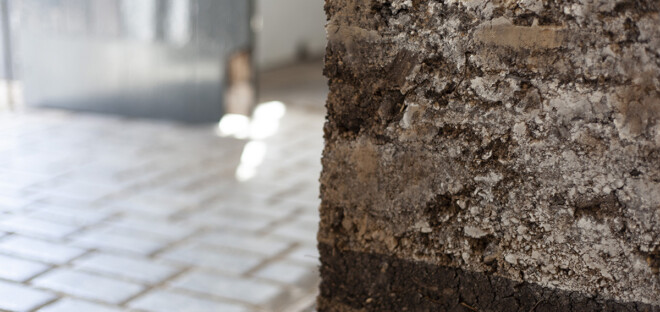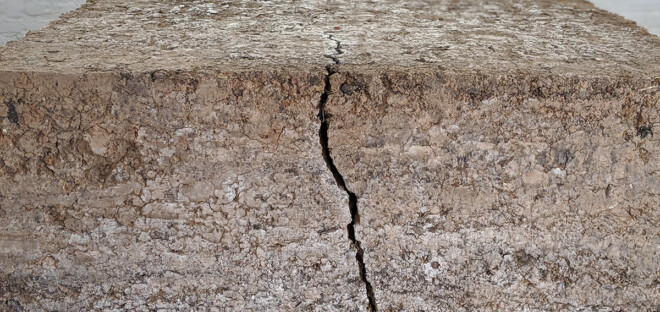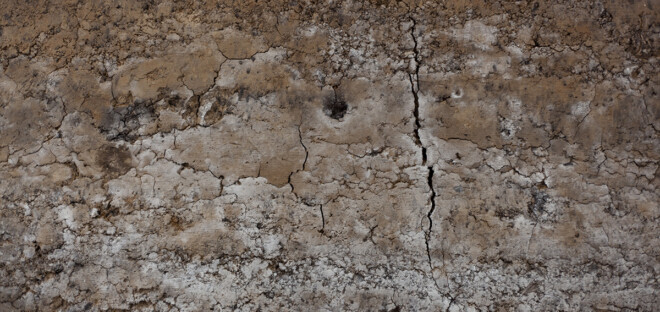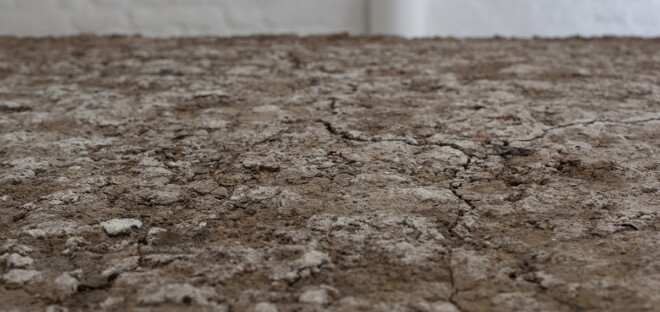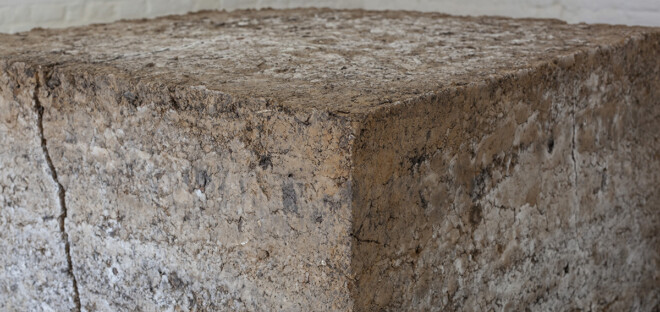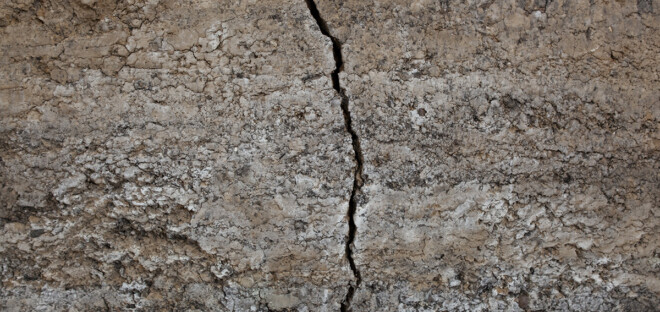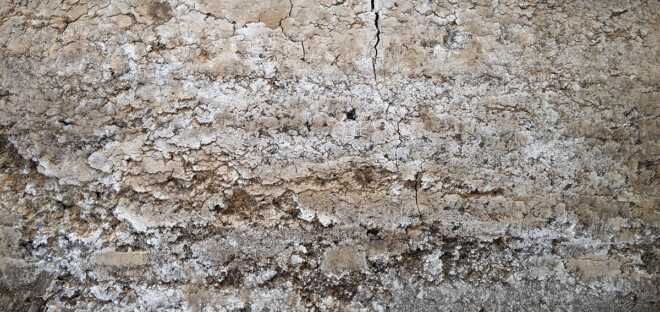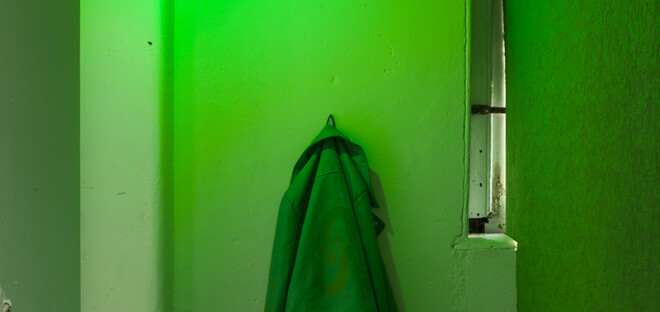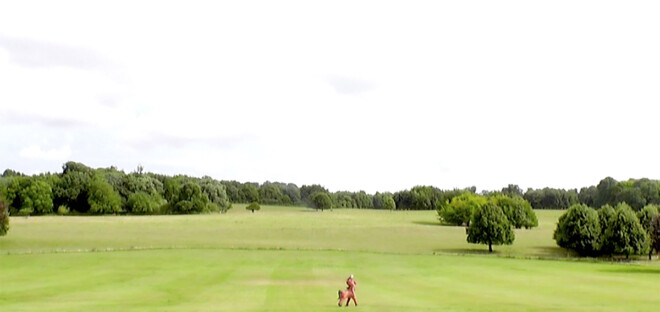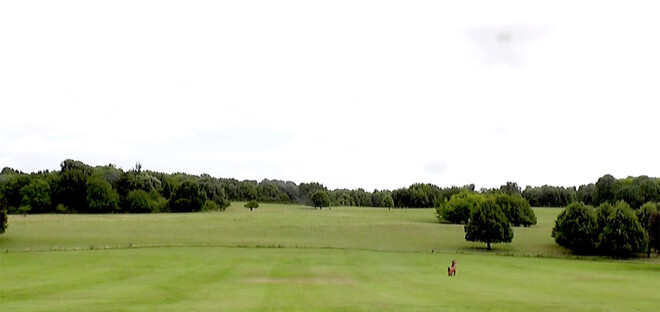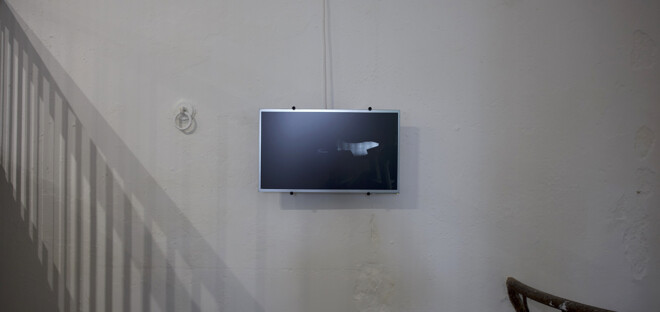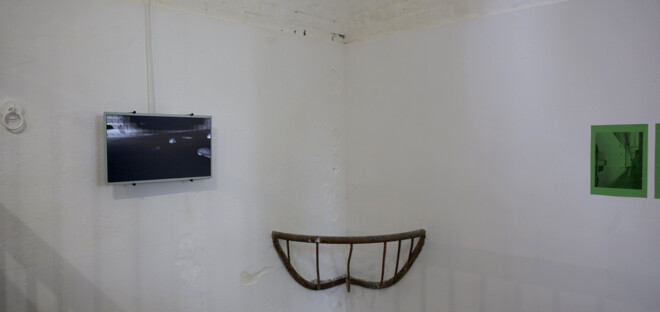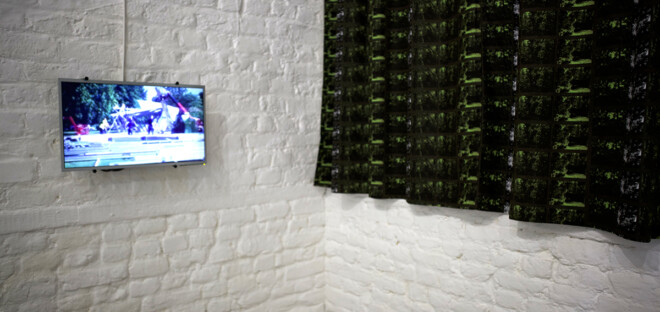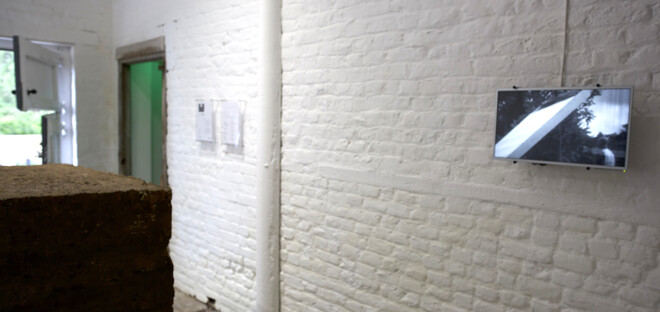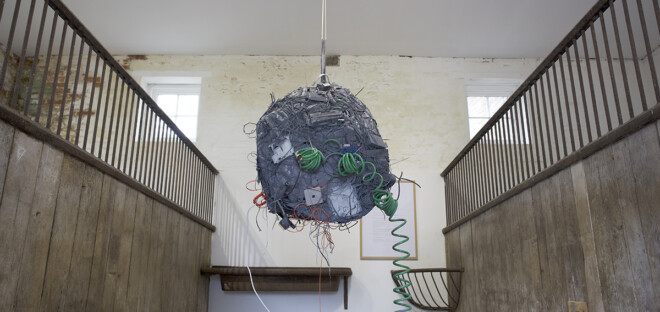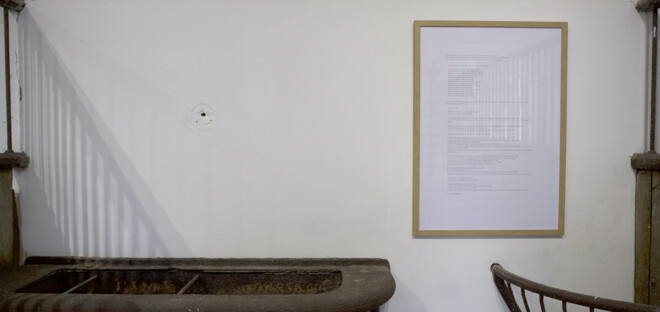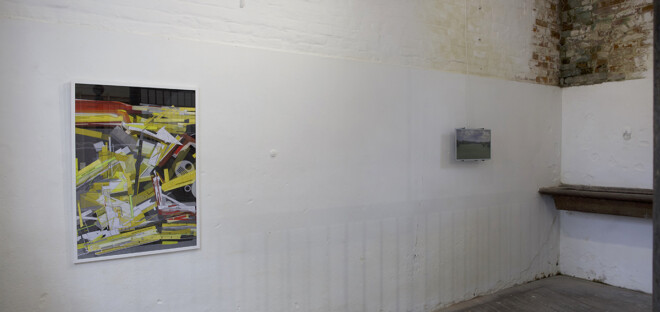74 YEARS
LIST OF WORKS ON DISPLAY
COLIN PRIEST
Near Bhukit Timah (2019)
Digitally printed, ‘suede’ curtains
228 x 228 cm
The Green Corridor in Singapore is a natural area found along the old Singapore-Malayan Peninsula railway line. Cutting through woods, marshes and grassland it was part of the former Kerata Api Tanah Melayu (KTM) rail line and is succored by Nature Society Singapore. The area around Bukit Timah in particular is curiously locked by highways and housing, below are new waterpipes protecting the area from development making it a vibrant public amenity and resource. Walking, this verdant landscape gradually shadows.
TOM PLUMPTRE &
FEARGHUS RAFTERY
One Thousand Seven Hundred and Seventy Six Years (2019)
compacted earth
120 x 120 x 120 cm
The law of Superposition states that in any undisturbed mass of earth the oldest layers will be at the bottom and the newest at the top. This broad method of analysis has long been used by geologists to judge the relative age of rock formations leading to the identification of geological time periods. In the process of creating One Thousand Seven Hundred and Seventy Six Years, earth taken from the close to the surface of a nearby excavation has been placed at the bottom of a mould and the deeper older earth from the bottom has been placed on top. In this way the piece takes the law of Superposition and reverses it to reveal the deepest layers of the earth beneath our feet at the top of its clear geometric form.
MATTHEW TURNER
Shortcut (installation) (2019)
plywood, sawn timber, paint and electric lighting
approx 240 x 120 x 300 cm
Shortcuts, like those used by black cab drivers in London to outmanoeuvre clotted roads and reduce journey times, are usually utilised to save time and reduce distance. Shortcut (2019) however has more in common with the online shortcut that often comes in the form of a hyperlink, or simply a link, most commonly seen on Wikipedia pages in form of key words coloured ‘Gecko’ blue, which can be clicked on to reveal endless corridors of random pages. While these amorphous doppelgängers in the digital realm evidently refer to the traditional shortcut, making us believe we are optimistically clicking through to somewhere quickly — a place of more knowledge, detail or information — we are not getting anywhere at all.
Shortcuts, while holding the promise of something beneficial, are also fissures of a place’s dark inner lining. It’s perhaps no coincidence that the hyperlink symbol, an interlocking chain link, is surprisingly similar to the ancient Ouroboros motif, a snake in the shape of a Mobius strip, devouring its own tale, said by Carl Jung to represent the subconscious desire to consume oneself.
GREIG BURGOYNE
Lost in Space (2019)
2 channel video (of a live performance made on 17.08.19)
edited video – 27 minutes (actual performance 1hr 49 mins)
Burgoyne in an inflatable horse outfit
A horse measures its stable area (the gallery where the resulting performance as film will be shown) by counting out-loud its footsteps while simultaneously recording this on an iPhone. Then outside, in the vast grounds opposite the stately home, the horse plays back the recording and follows the 74 steps (measured in stable) 74 times. In theory the horse will reiterate its stable area, instead it seems to wander aimlessness but with conviction. decisively indecisive , purposeful lack of purpose, perhaps lost in space.
OWEN VINCE
And Punches The Conqueror (2019)
video loop of a constructed digital environment
11 minutes 11 seconds
Built using software ordinarily reserved for creating video-games And Punches the Conqueror shows a mech, a non-human robot, as it makes its way through a desecrated, ruined, and abject world. The mech is the cause of this destruction – having wiped out all life on the planet. As it picks through the remains, it encounters snippets of stories – text messages, conversations, radio broadcasts, that were made in the final moments before the destruction event.
Inverting the traditional hierarchy of video-games (where the player actively participates in the destruction), And Punches the Conqueror invites the player/viewer to encounter the spaces around destruction, and to reflect critically on our own intensified obsession with leveraging (digital) violence. What’s more, we are increasingly confronting the possibility of the earth’s future being un- or de-populated by humans. Should any species extinction event take place, whether soon or far into the future, what might we leave behind? What ‘intelligences’ might scour the world we once commanded?
KRISTINA KOTOV
12 Sept 2001 (2001)
A film of the dis-mantling of the Serpentine Pavilion (2001)
video filmed 12.09.2001
Original score by Alex Hogg
49 minutes
GRACE ADAM
A Gadget and a Poem (2019)
packing foam, embroidery thread and electronics
approx. 100 x 100 cm
‘Holy Sonnet X1V’ by John Donne and excerpts from ‘Plutonium Ode’ by Allen Ginsberg
framed 35 x 25 cm
Lead physicist J. Robert Oppenheimer named the atomic test Trinity in an odd and disturbing reference to John Donne’s poem Holy Sonnet XIV, which imagines a man and world violently remade: Allen Ginsberg wrote Plutonium Ode in 1978.
A Gadget, the large spherical sculpture, that refers to The Gadget, The Manhattan Project’s laboratory euphemism for the atomic bomb (detonated in the Jornada del Muerto in on July 16th 1945) is installed alongside a framed print, A Poem composed of elements from Holy Sonnet X1V by John Donne and Plutonium Ode by Allen Ginsberg, and the names of some of the plants that grow in that desert.
KATHERINE SCOTT
Fåfängan, Stockholm (2019)
Digital drawing printed on paper
framed 100 x 70 cm
The ‘Anthropocene’ has been proposed to describe the current geological age we are in. Humankind has created a deliberate, yet paradoxically mindless archive of our contemporary behaviours within the Earth’s geology itself. Our plastic, concrete and steel structures and artefacts will create a legacy of humankind’s telluric force on Earth.
Katherine’s site of analysis for this work is the cruise terminus in Stockholm between the granite outcrops of Fåfängan and Katarina. A study of the site revealed a geometric, timic terrain that could be reinhabited as a blueprint for a masterplan. The landscape is a Bergsonian simultaneity; with historic geometric traces of architecture on the site re- established as new buildings for the deep future. The masterplan proposed is a forward-facing archive, critiquing the role of architecture in the Anthropocene.
JESSICA OSTROWICZ
Clot (Stain) & Clot (Object) (2019)
dust, bone, fat & ash
approx 100 x 60cm
Evolutions come in tiny increments. The glitches, uncertainties and breaks in the expected are what create space for these challenges and changes to be provoked. Scar tissue not only heals but weaves a new layer. It is this layer that ‘Clot’, a two part installation, featuring a stain on the floor of the gallery and a hand made door stop in the entrance to the space, is positioned.
The materials used for the two parts of the installation are bodily substrates: dust, bone ash and fat. Biblically dust and ash are what humanity is made from and returned to, and this cyclical ritual is retained in the making of the work. The stain on the floor is made by rubbing a soap fat and dust into it — a process that simultaneously makes and destroys itself as the dust leaves a mark and the soap removes it. The door stop is cast from bone, ash and resin. Here elements of what it is to be human ar returned back into the ground and chipped away at as the door opens and closes. Just as the soap will attempt to wash the dust away, the marks will indelibly continue to appear.
